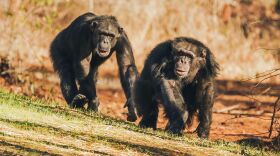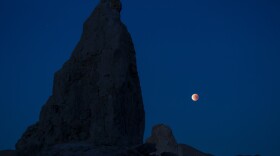
Nell Greenfieldboyce
Nell Greenfieldboyce is a NPR science correspondent.
With reporting focused on general science, NASA, and the intersection between technology and society, Greenfieldboyce has been on the science desk's technology beat since she joined NPR in 2005.
In that time Greenfieldboyce has reported on topics including the narwhals in Greenland, the ending of the space shuttle program, and the reasons why independent truckers don't want electronic tracking in their cabs.
Much of Greenfieldboyce's reporting reflects an interest in discovering how applied science and technology connects with people and culture. She has worked on stories spanning issues such as pet cloning, gene therapy, ballistics, and federal regulation of new technology.
Prior to NPR, Greenfieldboyce spent a decade working in print, mostly magazines including U.S. News & World Report and New Scientist.
A graduate of Johns Hopkins, earning her Bachelor's of Arts degree in social sciences and a Master's of Arts degree in science writing, Greenfieldboyce taught science writing for four years at the university. She was honored for her talents with the Evert Clark/Seth Payne Award for Young Science Journalists.
-
Scientists are tracking a deadly bird flu outbreak that has infected wild birds in more than 30 states. Purging the nation's poultry supply may not be enough to keep the virus from sticking around.
-
Scientists using the Hubble Space Telescope have spotted light from what appears to be the most distant star ever seen. It offers a glimpse into an early moment in the history of the universe.
-
How do boa constrictors breathe while constricting their victims? A new study finds that snakes can switch which set of ribs they use to draw in air as they crush their meal before devouring it.
-
Building and operating telescopes can generate a lot of greenhouse gases. In fact, it's as if each astronomer in the world was driving more than 100,000 miles per year, a new study finds.
-
Picture perfect: Mission managers say the telescope's mirror segments have been aligned and have focused on single stars, a critical milestone, and the telescope is working flawlessly.
-
All chimps managed by the National Institutes of Health that are currently eligible to go to a sanctuary have been moved there, but animal welfare advocates say more should be allowed to go.
-
Scientists have found many planets orbiting distant stars, but so far no proof that any have moons. Now, researchers have detected signs of a large exomoon orbiting a Jupiter-like world.
-
With the James Webb Space Telescope safely deployed, many scientists want to use it. To minimize the effect of unconscious biases, they go through a process developed for the Hubble Space Telescope.
-
Health, Science & EnvironmentNASA's James Webb Space Telescope is waiting at its launch site, after years of repeated delays and cost overruns. At one point, the giant new observatory was threatened with cancellation.
-
As they count down the hours to the highly anticipated launch of NASA's powerful, $10 billion James Webb Space Telescope, astronomers hope for the best while fearing the worst.










